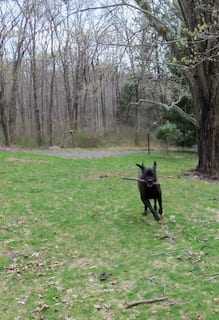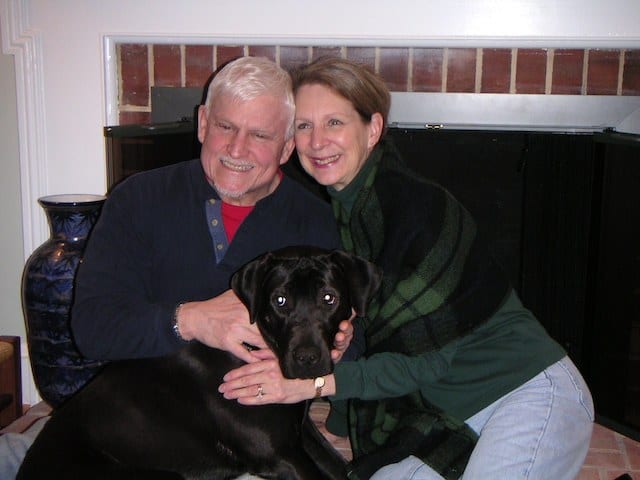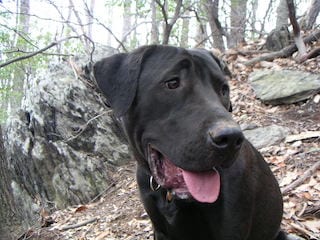
In the fall of 2008, Keith and I walked into the Alexandria Shelter and fell in love with the biggest dog in the shelter. Correction, I fell in love with My First Dog, a 75-pound, sweet-tempered, all tongue and tail, 8–month-old black lab mix. Born on March 2, he’d been owned by a family of four children, ages 4-16, and a single parent with no time to take care of “Padfoot” as he grew and grew and grew. They’d given their growing puppy to a family friend who’d brought him to the shelter.
Keith and I visited with this goofy, hungry doggie and put our names on his wait list—another family had expressed interest before us. A few days later, we got a call from the shelter to set up a home visit. At that time, we lived in a townhouse next to a playground and dog run—the shelter staff member noted. She also noted we had the resources to take care of a dog and realistic expectations of what that would mean.
Benefits for Adopting a Shelter Dog from the Alexandria shelter:
- Spayed or neutered
- Tested for heartworm and some other tick-born diseases
- Current on all basic vaccinations
- Microchipped
We paid the adoption fee, and as soon as “Padfoot” was neutered, picked up “Heathcliff.” His profile information said he didn’t like to ride in cars. But Heathcliff jumped in the backseat of our car and hung his head out the window. He was one happy doggie, living with us.

The information also said he was house trained. But like many young shelter dogs shunted from one owner to another, Heathcliff struggled with stress. Several times in the months following his adoption, we returned home to ears-back “I made a mess” body-slumps instead of happy-to-see-you, trying-not-to-jump dances. Correction, Keith returned home to the messes, because I was working in Baltimore.
Taking care of a shelter dog
When I was home for the holidays, we enrolled in Charm School where I learned to think like a dog and assert my humanity in ways that I had not previously explored. “Sit-down-stay, come-touch-ok, heal and hurry up, Heathcliff! Good Boy!” During our walks, I reinforced his training, especially after I left my Baltimore job in 2010 to oversee the building of the mountain house where we moved in 2012.

110-pound Heathcliff loved to run up and down the mountain as here, though up challenged his slim hips. At age seven, he ruptured the cruciate ligament in his left hind leg, an injury that required major surgery. He ruptured the right leg cruciate ligament three years later,prompting another surgery. That recovery was more difficult.
Saying goodbye to a much-loved shelter dog
Heathcliff has blessed us in many ways over the years. He’s appeared in several of my blog posts about nature, including this one, and has starred in guest posts about writing, such as this one on Brevity blog. In April on The Perennial Gen, I wrote about perseverance in faith and the reality that thirteen-year-old Heathcliff, though persevering, would not be with us much longer. This afternoon, Keith and I are taking him to the vet and saying goodbye.
I will remember him, playing with sticks in the front yard of my mother’s house in Connecticut, or running the mountain here at Vanaprastha, the place where we will scatter his ashes. To paraphrase Alfred Lord Tennyson: ’tis better to have loved a shelter dog and lost than never to have loved at all.



Oh my goodness that time went by quickly. I am so sorry for your loss. Sending hugs your way.
Thank you, my friend! Many tears, many wonderful memories.
So sorry for your loss, Carole! Heathcliff was such a delight. He will be missed!
Thank you, Vonetta! Heathcliff was a blessing. Though sad that he’s gone, we are grateful to have had him.